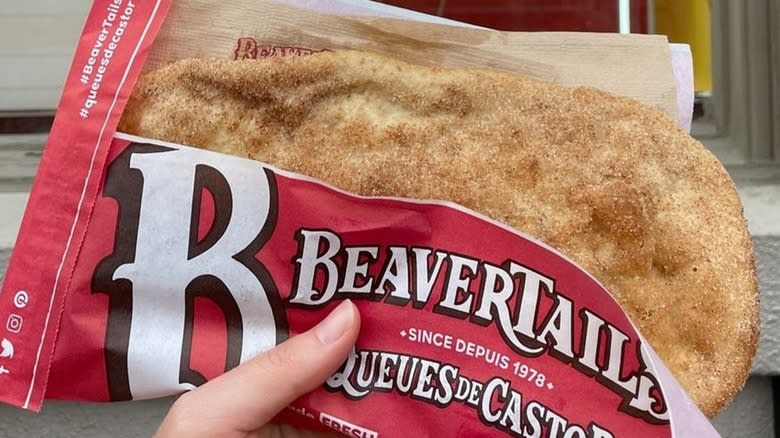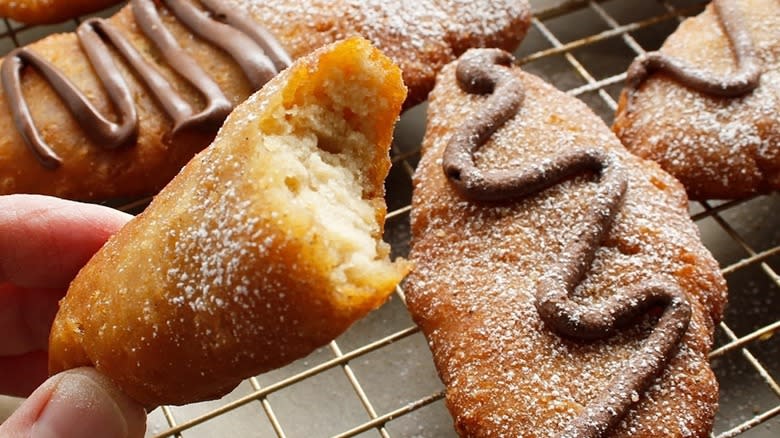The Historic Origins Of Canada's Beloved Beaver Tail Pastry

Other than bearing a strong resemblance to the paddle-shaped tails beavers use to build their habitats and ward off interlopers, Canadian beaver tails have absolutely nothing to do with the resourceful rodents known for their dam-building skills. And even though the beaver is Canada's national animal, most Canucks will readily accept an invitation to grab a cup of coffee and a beaver tail. That's because we're talking about a deep-fried pastry drenched in cinnamon sugar. Crisp on the outside and fluffy on the inside, a Canadian beaver tail is similar in taste and texture to a cinnamon donut, except it's flat.
It would be easy to assume the beaver tail is rooted in Canadian history; something pioneer households whipped up over an open fire, but the full-circle story is more complicated. In fact, the beaver tail Canadians know and love today is a relatively new creation. At least in terms of its name. In the 1970s, Pam and Grant Hooker operated a food stall at a local community craft fair in Killaloe, Ontario, about 100 miles west of Ottawa. The couple decided to add one of Grant's family recipes to the roster. The deep-fried pastries called küchle (pronounced keekla) — a sweet treat his German-Canadian grandmother often made — were a hit. When the Hookers' daughter remarked that the disc-shaped confections looked like beaver tails, the Hookers seized the opportunity and trademarked the name.
Read more: 23 Whole Foods Baked Goods, Ranked
One Thing Leads To Another

An alternate origin story links the pastry the Hookers named beaver tails to bannock, or baking day bread. A staple among early Canadian settlers who mimicked the cooking techniques of indigenous people, the bread was flat and elongated, a result of stretching dough between two sticks over an open fire. That lore accounts for the shape of the popular confection and gives credence to stories that — long before their daughter inspired the catchy name — the Hookers draped dough over a clothesline for their version of küchle. Regardless of the confluence of events that led to its creation and name, the treat now boasts an international fan base.
The Hookers opened their first brick-and-mortar store, BeaverTails, in 1980. Today, the company operates about 200 outlets with locations throughout Canada and in Dubai, France, Japan, Mexico, the United Arab Emirates, and the United States. The original version — fried whole wheat dough with a generous coating of cinnamon sugar — is still popular, but the best-seller list has expanded to include swoon-worthy toppings like whipped cream and Nutella. And as the company expanded beyond Ottawa, regional favorites began to influence the menu. In Vancouver, British Columbia, a beaver tail topped with salmon, cream cheese, and capers is a favorite. Beaver tail fans in Halifax, Nova Scotia are partial to a lobster tail-topped pastry, and, in a nod to two of Canada's best-known food traditions, the PouTail is a beaver tail topped with french fries, cheese curds, and gravy.
Read the original article on Tasting Table.
Solve the daily Crossword

